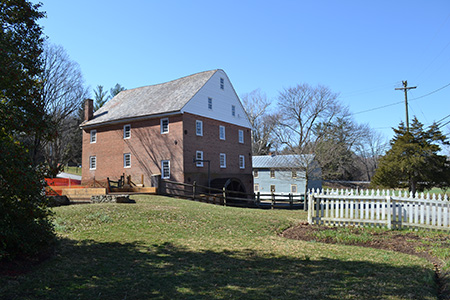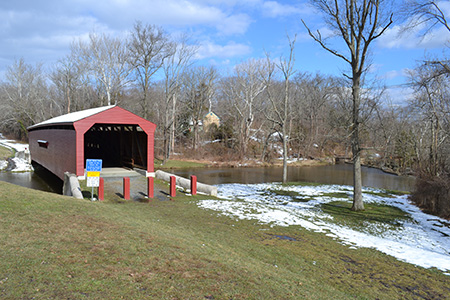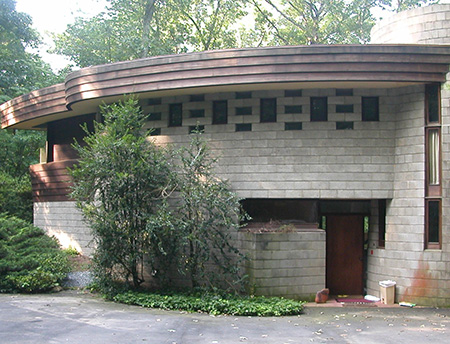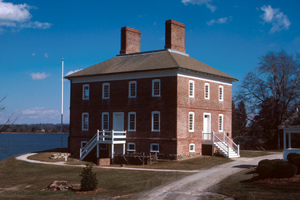How are properties listed?
 Union Mills Homestead Historic District, Carroll County. MHT Staff photo.
Union Mills Homestead Historic District, Carroll County. MHT Staff photo.
National Register Criteria
To be eligible for the National Register, a property must demonstrate significance in terms of one or more of
four broad criteria
- events or trends;
- association with individuals who made a demonstrable and lasting contribution;
- architectural merit;
- or the potential to yield information that will contribute to a better understanding of our past.
Significance is evaluated in a national, state, or local context.
Integrity
In addition to demonstrating significance, a property must retain physical integrity to reflect that significance; it
must not have been substantially altered since the period when the event occurred, or the person lived there.
- Architecturally significant properties must retain the majority of the features that characterize their type.
- Archaeological sites must remain intact.
National Register Nomination Forms
Information concerning the physical character and historical development of a property is presented in a specific
format on a National Register nomination form. Nomination forms and instructions are available from MHT; please
contact mht.nationalregister@maryland.gov.
Determinations of Eligibility
For purposes of regulatory compliance, agencies may request a
determination
of eligibility (DOE). DOEs are only made in the course of compliance projects. However, MHT staff can
offer an informal, preliminary opinion on a property’s potential eligibility upon request. To find out
how to determine whether a property may be a likely candidate for listing in the Register,
contact mht.nationalregister@maryland.gov.
The Review Process
 Gilpin Falls Covered Bridge, Cecil County. MHT Staff photo.
Gilpin Falls Covered Bridge, Cecil County. MHT Staff photo.
- National Register nominations are submitted to MHT, where staff performs an initial review.
- Nominations are then scheduled for presentation to the Governor’s Consulting Committee on the
National Register (GCC), which meets three times a year.
- If the GCC’s recommendation is favorable, and the State Historic Preservation Officer concurs, the
nomination is forwarded to the National Register office of the National Park Service for final action.
Certain local governments in Maryland have been certified by NPS to participate in the National Register review
process. In these jurisdictions, the local Historic Preservation Commission and chief
elected official are also charged with reviewing nominations and making recommendations concerning their eligibility
for the National Register.
» Learn more about Certified Local Governments
Benefits and Protections
 Robert Llewellwyn Wright House, Montgomery County. MHT Staff photo.
Robert Llewellwyn Wright House, Montgomery County. MHT Staff photo.
Listing in the National Register honors the property by recognizing its importance to its community,
State, or to the Nation, and confers a measure of protection from harm by Federal or State activities.
It does not, however, place any restrictions on the actions of private property owners.
Listing in the National Register is the effective threshold for eligibility for a variety of programs designed
to assist in the preservation of significant properties, including
Federal and State tax credits for certain types of rehabilitation work. Other financial incentives for preservation
include grants and loans.
Donations of preservation easements on Register-listed properties may qualify for charitable tax deductions.
» Learn more about the "Section 106" process
 London Town Publik House, Anne Arundel County. MHT Staff photo.
London Town Publik House, Anne Arundel County. MHT Staff photo.
National Historic Landmarks
The National Historic Landmarks program is administered by the National Park Service; the Maryland Historical
Trust plays an advisory role in the designation process. Properties designated National Historic Landmarks are
have been determined by the Secretary of the Interior to have exceptional value in representing or illustrating
an important theme in the history of the Nation as a whole.
» Learn more about the National Historic
Landmarks Program
Maryland Register of Historic Properties
Properties listed in the National Register, or determined eligible for the National Register by the Director of
the Maryland Historical Trust, are also included in the Maryland Register of Historic Properties (MRHP).
The MRHP is a list of properties recognized by the State of Maryland for their significance
in American history or culture. Properties listed in the MRHP are afforded certain regulatory
protections, and are eligible for MHT grants and loans.
» Learn more about the Maryland
Register of Historic Properties